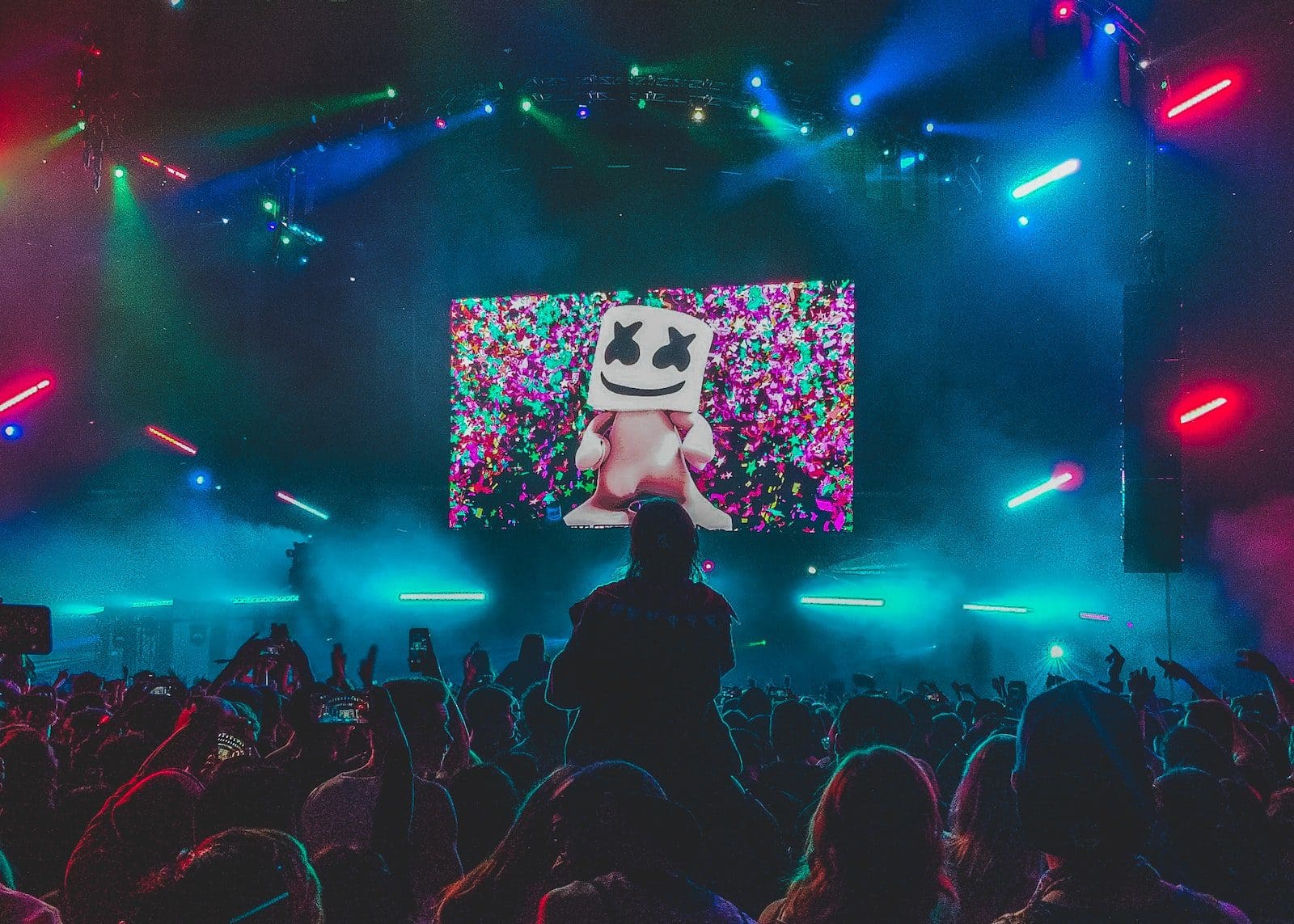Music is the thing that connects people all over the world. Different people have different tastes in music.
Nowadays, electronic music is very popular among people. Many electronic music festivals also get organized worldwide, and people attend them in great numbers. There are also certain types of electronic music: Dubstep music and Trap music.
Key Takeaways
- Dubstep is a genre of electronic dance music that originated in the UK in the early 2000s, characterized by heavy bass lines, syncopated rhythms, and a wobbly, distorted sound; trap music is a subgenre of hip-hop that originated in the Southern United States, characterized by slow, heavy beats and intense, repetitive hooks.
- Dubstep incorporates elements of other genres, such as garage, drum and bass, and dub; trap music is heavily influenced by Southern hip-hop and incorporates elements of electronic music.
- Dubstep features complex sound design and production techniques, with a dark, atmospheric tone; trap music relies more on catchy melodies and vocal hooks, with a more aggressive, party-oriented vibe.
Dubstep Music vs. Trap Music
Dubstep is a dance music category with heavy bass and a shuffled rhythm. It is one of the most popular styles of dance music today. Trap music fuses elements of electronic dance music and hip-hop with a slow tempo and energetic sound. Trap music lyrics refer to topics like violence and life events.

Also, dubstep music is an electronic dance style that originated in the UK in the early 2000s. Still, Americans later converted it into a very different style with the same, whereas trap music originated in Atlanta, and it is a subgenre of EDM.
Comparison Table
| Parameter of Comparison | Dubstep Music | Trap Music |
|---|---|---|
| Genre | It combines two electronic music subgenres, “dub” music and “2-step” garage. | It is a cross-over between EDM and hip-hop music. |
| Origin | It originated in London and Bristol in the early 2000s. | It originated in Atlanta. |
| BPM Range | It ranges from 138 to 142 BPM. | It ranges from 100 to 176 BPM. |
| Rhythm and Tempo | It has a more electronic and bass lines approach. | It is more about rhythm, bass, and a range of tempos. |
| Popularity | It was very popular from 2009 to 2014. | It is very popular and is still growing. |
| Artists | Skrillex, Zomboy, Datsik, Skream, Burial, Bassnectar, Knife Party, Flux Pavilion, Digital Mystikz, and more. | Wakka Flocka, T.I., Migos, Flosstradamus, RL Grime, Drake, Herobust, Baauer, DJ Sliink, Travis Scott, Young Thug, Yellow Claw, and more. |
What is Dubstep Music?
Dubstep is a type of Electronic dance music referred to as EDM. It is a new genre of dance music and combines two electronic music subgenres: “dub” music and “2-step” music.
It originated in London and Bristol in the early 2000s and became popular enough to be played worldwide.
The characteristics of dubstep music are:
- Rhythm – Dubstep rhythms are normally syncopated and shuffled. The tempo ranges between 138 – 142 beats per minute. It also has a clap or snare after every third beat in the bar. In the beginning stages, this type of music was more percussive, involving more tapping on the body parts with hands or any instrument.
- Wobble Bass – It is one of the characteristics of dubstep music and is referred to as “wub” most of the time. The extended bass note is manipulated to make it more rhythmic in this type of bass. According to the requirement, this bass style is created using a low-frequency oscillator to change some synthesizer parameters, like volume and distortion. Wobble bass is important in dubstep music and is preferred in clubs.

What is Trap Music?
Trap music is a type of EDM. It is more like a subgenre of hip-hop music. It originated in the Southern United States in the early 1990s. The name “trap” is derived from the Altana slang word “trap,” which refers to a place where drugs are sold illegally.
This type of music contains lyrical content focusing on drug use and urban violence. It uses synthesized drums, tuned kick drums, and atmospheric synths. The signature sound of trap music focuses more on snare drums and double-or triple-timed hi-hats.
It uses a tempo ranging from 50 BPM to 88 BPM. Originally, the lyrics of trap music displayed the general life and culture in the “trap,” other topics like violence, street life, and the life experiences that the artists had in southern American Surroundings were also reflected in the lyrics.
The main motto of trap music is to create an energetic, deep, and hard-hitting atmosphere by using string, brass, woodwind, and keyboard instruments.

Main Differences Between Dubstep Music and Trap Music
- Dubstep music combines two electronic subgenres, “dub” music and “2-step” garage, whereas trap music is a cross-over between EDM and hip-hop music. Also, trap music focuses more on an energetic approach.
- Dubstep music originated in London and Bristol in the early 2000s, whereas trap music originated in the early 1990s.
- Dubstep music ranges from 138 to 142 BPM, whereas trap music ranges from 100 to 176 BPM.
- Dubstep music has a more electronic and bass lines approach, whereas trap music is more about rhythm, bass, and a range of tempos. Trap music also contains lyrics that relate to the life experience of southern America.
- Dubstep music was very popular from 2009 to 2014 but later decreased, whereas trap music is still growing. It has many variations also, which attract the crowd.
- The famous artists of dubstep music are Skrillex, Zomboy, Datsik, Skream, Burial, Bassnectar, Knife Party, Flux Pavilion, Digital Mystikz, and more. The famous artists of trap music are Wakka Flocka, T.I., Migos, Flosstradamus, RL Grime, Drake, Herobust, Baauer, DJ Sliink, Travis Scott, Young Thug, Yellow Claw, and more.

- https://www.oxfordhandbooks.com/view/10.1093/oxfordhb/9780199935321.001.0001/oxfordhb-9780199935321-e-74
- https://www.wikizero.com/en/Electronic_dance_music

I respectfully disagree. I’m not really a fan of electronic music. I find it too repetitive and lacking in creativity
I don’t really see the appeal in Trap music. I hope Dubstep makes a comeback and overshadows it
Everyone has different tastes, it’s what makes music so diverse
It’s interesting to see people’s preferences in music and how they think one is better than the other
I appreciate the informative explanation about the difference between Dubstep and Trap music
Indeed, understanding these differences is crucial to appreciating the genres fully
Ironic that Trap music lyrics are about violence
It is quite ironic indeed, considering the name and origin of the genre
There’s a deep, dark irony in the themes of the music originating from the ‘trap’
The commentaries about the songs origin and characteristics are really interesting
It’s always important to know what we’re listening to and where it comes from
The history and particularities of these genres are quite fascinating
I’m a fan of Dubstep and I’m glad to see it get the recognition it deserves
I’m not a fan of Dubstep, but I understand its appeal. It’s interesting to see how it’s compared to Trap music
I think it’s important to understand different music genres even if we don’t personally enjoy them
I find it fascinating that electronic music keeps evolving and blending different genres. The explanation about the characteristics of Dubstep and Trap music was enlightening.
I had no idea about this. The comparison table was really helpful for understanding how Dubstep and Trap music differ
I agree, the way these genres are described helps understanding the difference between the two
I’m glad there’s more information about these genres. It’s always good to know more about what we’re listening to
I’m not a fan of either Dubstep or Trap music, I prefer more traditional music
It’s okay not to enjoy every music genre, variety is what makes the music world so rich